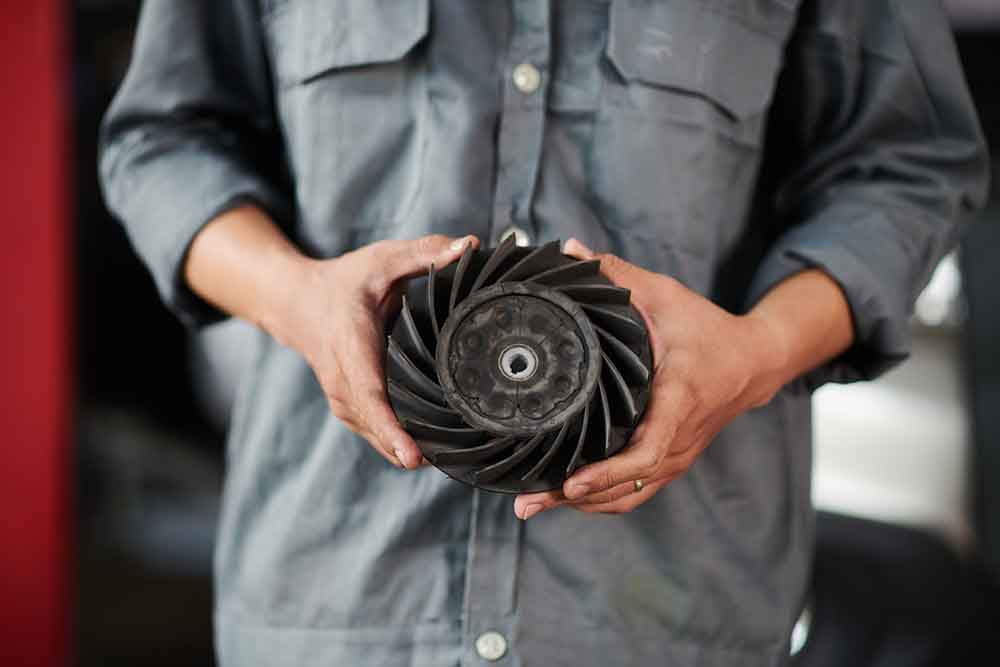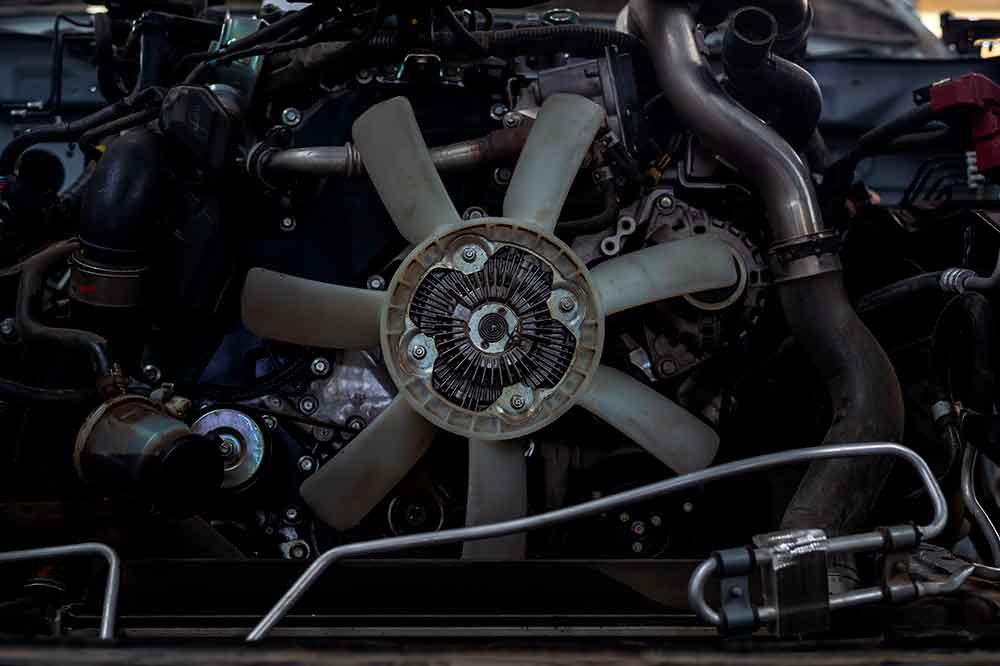At first glance, a burned fan motor may seem like a simple failure or a result of poor-quality parts. However, in practice, many cases of fan motor burnout are a direct consequence of a deeper underlying issue within the vehicle’s cooling system. This is a very important and professional point that, unfortunately, many mechanics and end users overlook.
In reality, what usually happens is treating the symptom instead of the cause:
The fan motor burns out → it gets replaced → and a few weeks or months later, the same problem occurs again.
In this article from Karengo, we aim to examine one of the most important root causes of this issue and provide practical preventive solutions. Stay with us until the end of the article.
Main Root Cause: Radiator Blockage or Poor Coolant Circulation
The most common technical cause of fan motor failure is blockage in the radiator or disruption in coolant circulation within the cooling system.
This situation results in abnormal engine temperature increase because the heat exchange between the coolant and outside air doesn’t happen properly. The direct consequence of this condition is increased workload on the radiator fan:
- The fan needs to stay on constantly to reduce temperature
- The fan relay continuously switches on and off
- The fan operates in high-speed mode for long periods
- As a result, the fan motor is subjected to continuous overload and eventually burns out
This leads us to ask:
Was the fan itself really the problem, or was the fan motor just a victim of a deeper issue?
Understanding the Components Involved
To better understand the process, let’s look at the key components involved in heat exchange and engine cooling:
1. Radiator
If the radiator fins are clogged with dirt, mud, rust, grease, or external debris (dust, insects, leaves), the coolant won’t cool down properly. This increases engine temperature and adds extra load to the fan.
2. Thermostat
If the thermostat remains stuck closed or opens late, coolant circulation to the radiator is delayed or blocked. Result: overheating and constant fan activation.
3. Water Pump
Damaged impellers, corrosion, cracking, or leakage in the water pump causes poor coolant circulation. Without proper circulation, coolant boils inside the engine, putting excessive load on the fan.
4. Coolant Fluid
Old or non-standard coolant loses its heat exchange properties over time, and can also cause deposits to form inside the cooling system.
Recommended Solution: Prevention Instead of Repeated Replacement
Before replacing the fan motor, the root cause must be identified. Inspecting the cooling system should be a mandatory step.
Recommended actions:
1. Radiator Inspection
- Internal descaling with approved cleaning solutions
- External cleaning of radiator fins with proper water pressure
- Ensure proper airflow through the radiator
2. Test Thermostat and Water Pump
- Test thermostat in boiling water or using diagnostic equipment
- Check coolant circulation with the engine running and inspect water pump for leaks
3. Check Radiator Cap and System Pressure
- Coolant system pressure must remain within normal limits
- The radiator cap must not release pressure too early or retain it too long
4. Use High-Quality Coolant
- Use only coolant that meets standard specifications
- Replace coolant every 2 years or as recommended in the owner’s manual
Conclusion
Fan motor burnouts are often the result of deeper cooling system issues—not the fan itself. Unfortunately, many mechanics only replace the fan, while the root cause remains unresolved. If the core issue isn’t identified and fixed, even a brand-new fan will eventually fail.
By taking a systematic approach and paying attention to details, recurring costs can be prevented and the vehicle’s performance can be maintained consistently.




Leave a Reply